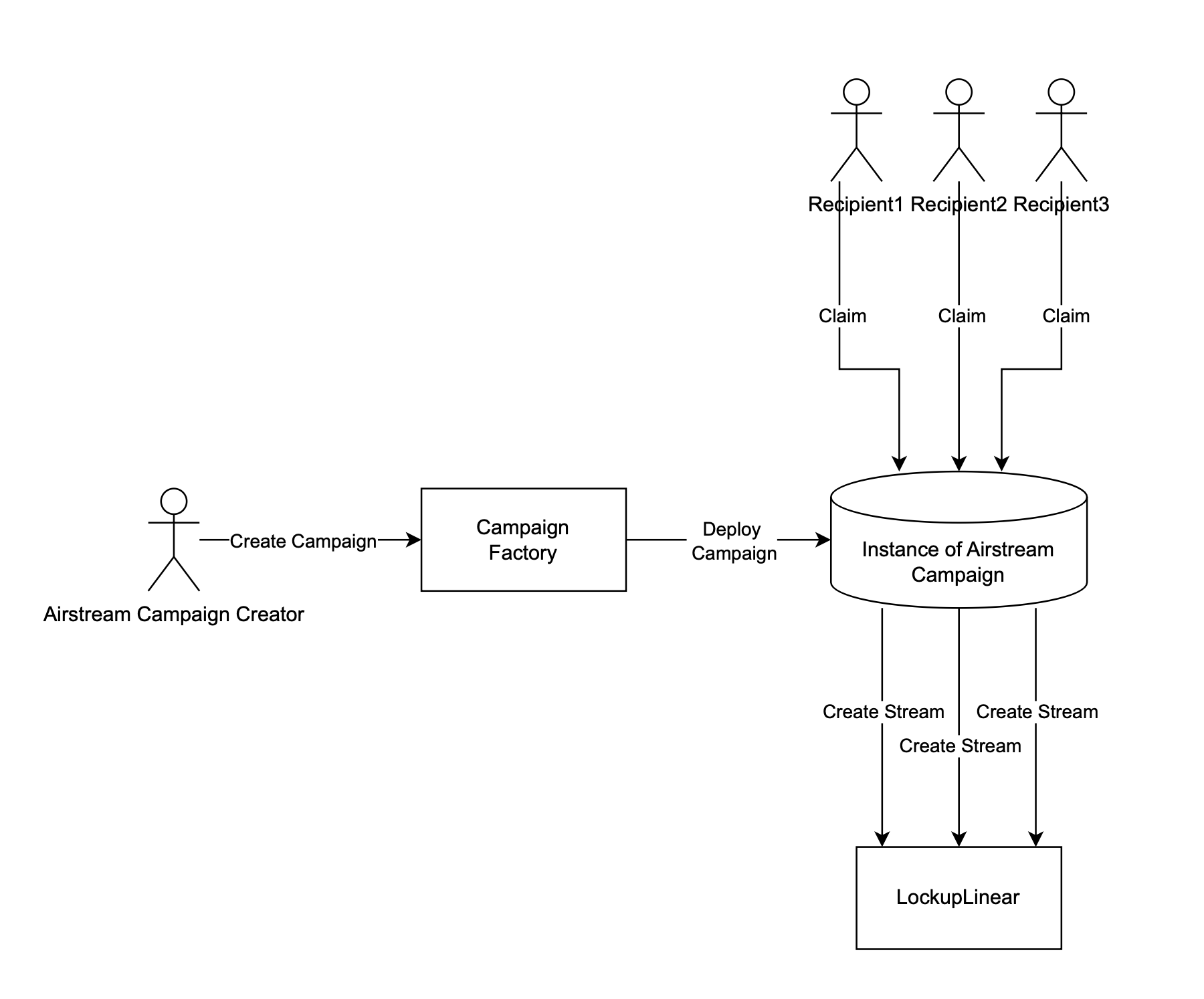Airstreams
Please refer to the airdrop section of our use-cases page for an explanation regarding why streaming an airdrop makes sense.
Why Airstreams?
The gist of Airstreams is that instead of airdropping the entirety of the tokens all at once, airdrop recipients receive a fraction of the tokens every second through a token stream.
The beauty of it is that airdrop recipients are forced to think long-term and keep the project's future as their first and foremost priority. They are forced to, because instead of receiving all the tokens at once, they receive them over time in the gorgeous Airstreams interface.
An airstream can have claim period of a few days, months, years or even no expiration, you get to chose. You could, for example, configure the airdrop of your new token to vest over years, but the recipients will receive the streaming tokens only if a claim is made in the interval set.
Airstreams not only create the right incentives for token holders, but also prevents them from dumping their tokens on day one, as has been the case for many airdrops in the past.
With Airstreams, airdrop recipients only receive a fraction of the tokens every second, only after they claim a stream and have to withdraw the tokens which are getting streamed.
How It Works
Thanks to our battle-tested token streaming and distribution protocol, you can quickly create Airstreams for thousands of recipients in a few clicks using our interface. Recipients and their respective airdrop allocations can be added by uploading a simple CSV spreadsheet to the interface.
Our spreadsheet feature is the perfect fit for airstreams: it allows you to upload a CSV file with tens of thousands of recipients and the interface will automatically create a new airstream for each of these recipients.
Another great advantage, is that creating an Airstream campaign with thousands of recipients won't ruin you in terms of gas fees, on the contrary. When launching a campaign, a contract is deployed, and Airstreams are only created when they are claimed by the Airstream recipients. This is made possible by a system called Merkle Distributor, which is backed by a Merkle Tree, a data structure used for efficiently summarizing and verifying the integrity of large sets of data.
The contract that implements an Airstream Campaign is called MerkleStreamer. For those interested in the technical
part, click here.
When you create an Airstream campaign, all you are really doing is deploying a contract that allows for the recipients you put in to prove that they are eligible, and create a stream if they are. That's all it is.
Additionally, you don't have to immediately fund the Airstream contract. You can first create the contract, and at a later date fund it with the tokens to be streamed over.
This has three great implications:
- Recipients pay for the gas fees themselves to create the stream, when they claim (the claim action creates the stream). Creating a campaign with thousands of recipients would be incredibly costly if the campaign creator had to pay for all the gas fees.
- You keep full control over unclaimed Airstream token allocations. If a recipient doesn't claim their Airstream,
it's not created, and you remain in full control over that token allocation.
- This is the case only if the campaign itself has an expiration date. If the campaign has no expiration date, the recipients can claim their Airstreams at any time in the future.
- You don't have to fund the campaign directly in order to deploy it. You can deploy the campaign contract now, and fund it at a later date when you feel comfortable doing so. There is no rush.
Once the Airstream campaign is launched, recipients who have claimed can withdraw the tokens which have already been streamed at any time using our interface. The deployment page, the last step when launching an Airstream campaign.
